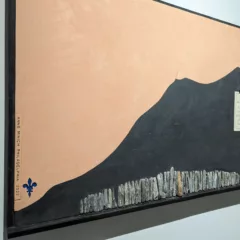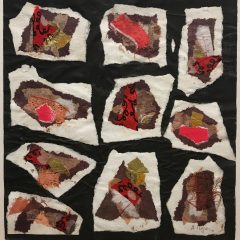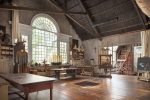[Andrea attends a performative reading of a new book on Thomas Chimes, written by his longtime friend and Artblog contributor Mari Shaw. — the Artblog editors]
Philadelphia artist Thomas Chimes (1921–2009) had a promising start: His work was shown in exhibitions across the country, in solo gallery exhibitions in NYC, purchased by the Museum of Modern Art, and displayed in a large-scale retrospective organized by the Ringling Museum of Art in 1968. When he heard that Marcel Duchamp, during a panel discussion in Philadelphia in 1961, had suggested that the great artist of the future would go underground, Chimes took it to heart.
The beginning and continuance of a meaningful friendship
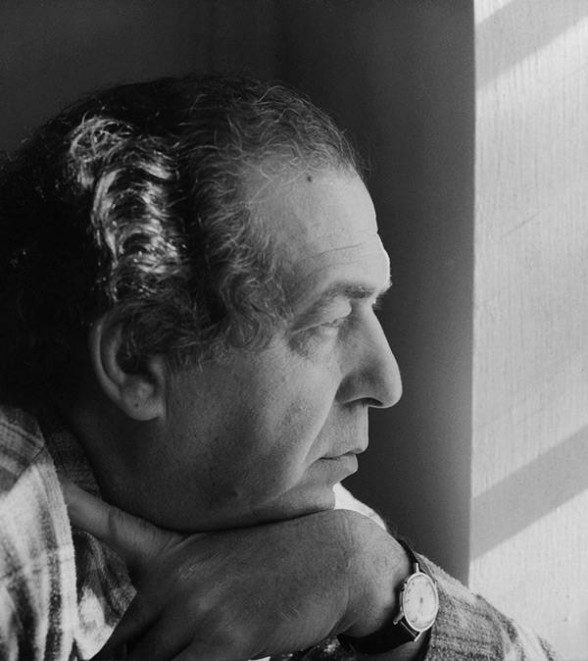
After his decision to go underground, Chimes described himself as a hermit, which was somewhat of an exaggeration. Philadelphia collector Mari Shaw met Chimes in 1985, at an opening of his work at Locks Gallery, and something clicked. It was obvious they would become friends. They became something more than that, and the relationship was of signal importance to both. Shaw was the avid and diligent student of Tom Chimes’ private pedagogy; the self-schooled artist passed on his lifetime involvement with art, literature, film, and philosophy. For her, it was a unique, in-depth view into the intellectual development of an artist and the way in which ideas are transformed via the process of making art. The friendship continued throughout the remainder of the artist’s lifetime. Since his death in 2009, Shaw has continued her conversations with Chimes; she knows him well enough to anticipate his answers.
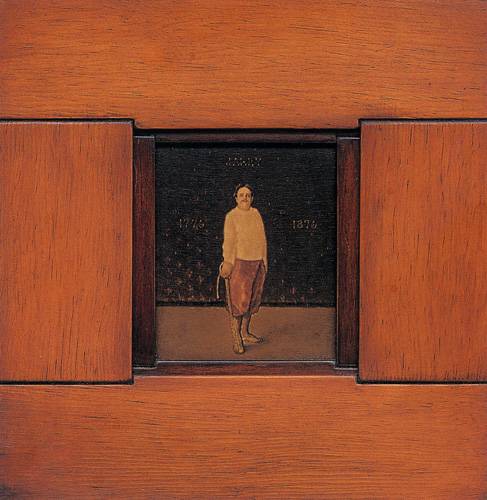
Chimes asked Shaw to record some of his ideas after his death, and she has. Thomas Chimes: Artist and Pataphysician (Marquand Books, Seattle: 2016, ISBN 978-0-9815762-6-8) is the result of years of intensive work. The artfully crafted and meticulously designed book, illustrated with more than 80 images of the artist, his work, and his sources, not only records Chimes’ artistic and intellectual journey, but testifies to a remarkable friendship. Shaw has structured it as a play, in homage to Chimes’ greatest artistic hero, Alfred Jarry (1873-1907), author of the anarchic and timeless play,“Ubu Roi,” and inventor of the discipline of ‘Pataphysics, which he defined as “the science of imaginary solutions.” She interweaves narrative chapters with chapters that provide background on Chimes’ sources; titles of the latter begin with “Concerning…,” again reflecting Jarry’s work.
A record of Chimes’ life and influences
Chimes’ sources and hence, the book’s topics, range from the ancient Greeks, Carl Jung, and James Joyce to Antonin Artaud and Marcel Duchamp. And Jarry–always Jarry and the many writers and others he influenced, including Guillaume Apollinaire, Oscar Wilde, Charles Baudelaire, Sarah Bernhardt, and Andre Breton. The book covers the performance history of “Ubu Roi,” from its original, panned production – the only one fully staged during the author’s lifetime–to its worldwide interest, and its use as a subject by artists from Picasso to William Kentridge. The book also gives a picture of the arts in Philadelphia during Chimes’ lifetime, with particular emphasis on the years after 1985, when his discussions with Mari included thoughts on exhibitions and plays she had recently seen.
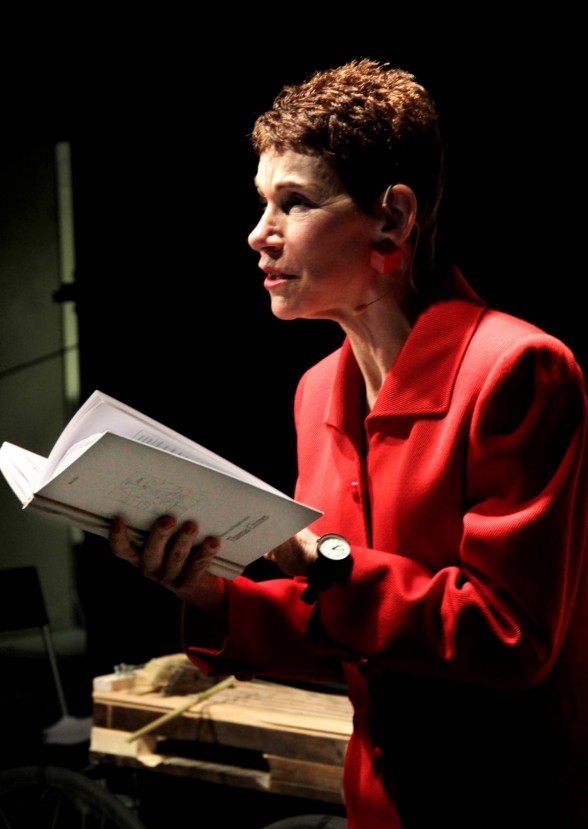
Shaw gives a reading
Mari Shaw is a longtime friend of, and occasional contributor to the Artblog, and supporter of the arts in Philadelphia, Berlin, and beyond. Libby, Roberta, and I were part of an audience that included artists, curators, scholars, and numerous other art professionals, as well as many of Philadelphia’s most enthusiastic art supporters, at Slought Foundation on Feb. 24, when Shaw held a reading to celebrate the book’s publication.
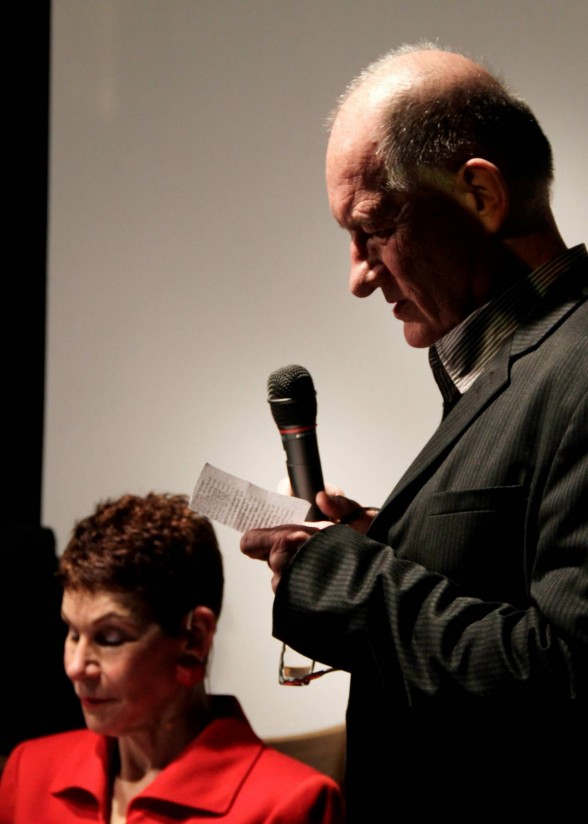
In keeping with the spirit of Dada, which was heir to many of Jarry’s ideas, the evening included the décor, with images of Chimes’ artistic heros around the front room, which also contained a large surface covered with a pile of assorted, used books– for the audience to take–and a multitude of household objects suspended above it. A chart of artists influenced by Jarry–which is also used as the book’s endpapers–covered a wall of the room where the reading was held.
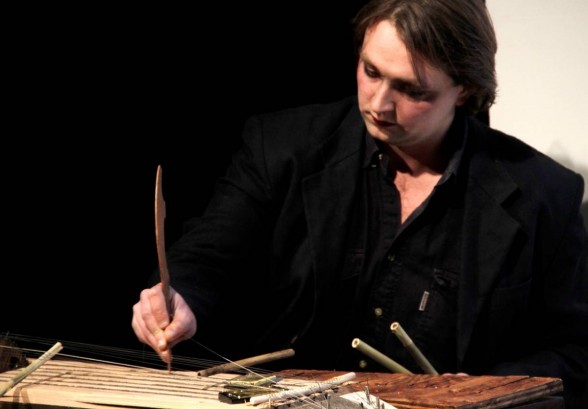
The reading itself involved various unexpected events: as their names arose in Mari’s narrative, members of the audience were asked to stand, then sit, by means of captions projected on the back wall; a young man in a suit–Julius Ferraro, representing Jarry–bicycled through the very tight space beside the audience and exited stage left; a puppet held aloft by Manon Manivit spouted “Merdre! Merdre! Merdre!”–the famous opening of “Ubu Roi”; Mari’s reading was accompanied by James Wadsworth Strong on a percussive, stringed instrument of his own making; and finally, the three performers covered their upper bodies in chalk (or was it flour or cornstarch?) as Jarry had done at the public rehearsal for the first performance of “Ubu Roi”–then sat, white-faced, at Mari’s feet.
When the reading finished, everyone was given a glass of absinthe, for a toast.
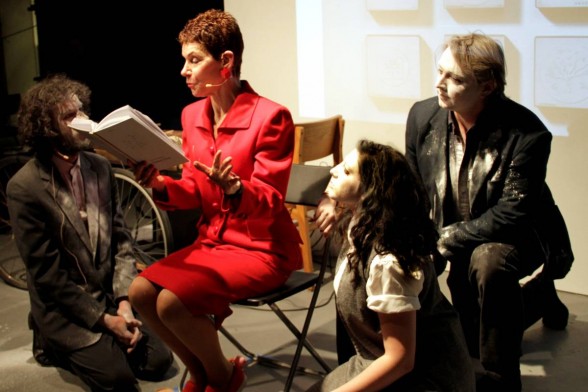 Mari Shaw has a number of further readings on her schedule, with others in the works, including:
Mari Shaw has a number of further readings on her schedule, with others in the works, including:
March 11, 2015, 192 Books, NYC
July 16, 2015, The Free Library of Philadelphia




